Technology Becomes a Messenger for Sikh Culture at Indian Museum Virasat-e-Khalsa
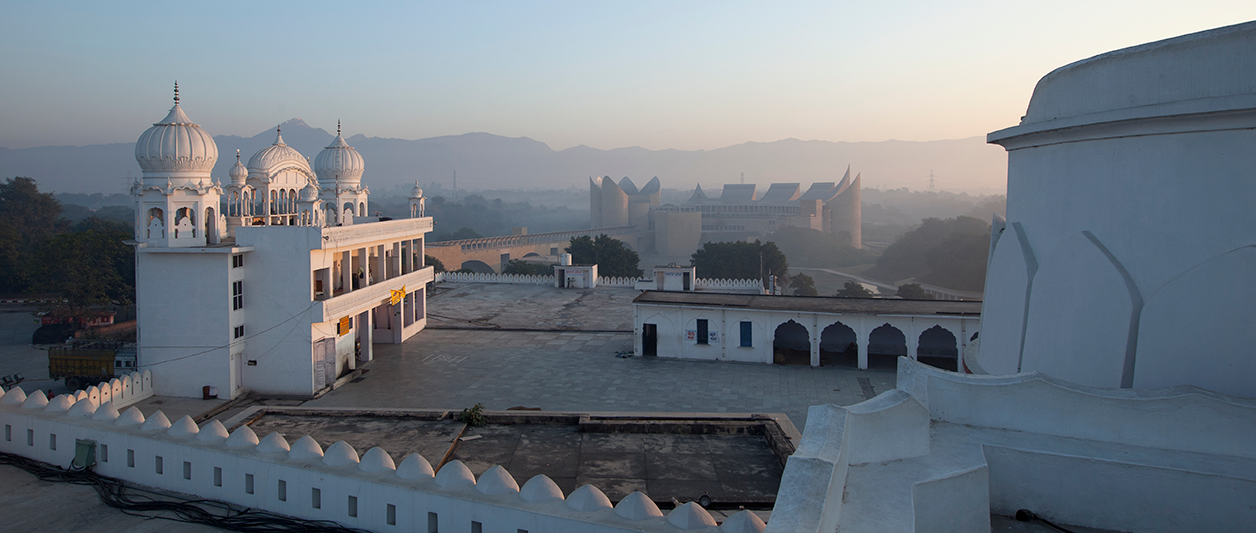 Virasat-e-Khalsa (Credit: Shalain Parker)
Virasat-e-Khalsa (Credit: Shalain Parker)
How do you create a world-class heritage museum to enthrall your visitors when you have no artifacts to show? You recreate your own relics, by subtly weaving in technology and staying sharply focused on the story.
In Anandpur Sahib — a holy town in the state of Punjab — sits Sikh heritage museum Virasat-e-Khalsa. The museum’s sprawling 65-acre site is situated next to the birthplace of Khalsa — Takht Shri Keshgarh Sahib — which is also one of the five highest Sikh institutions in India.
Since the first phase of Virasat-e-Khalsa was opened to the public in 2011, nearly 10 million guests have traveled from around the world to visit. Now together with phase two that launched five years later, it has easily become one of the most visited museums in India.
“We set out to create a grand ensemble of 500 years of Sikh legacy and the Khalsa heritage to achieve a wonderment grounded in reality,” says Amardeep Behl, head of Design Habit, the design management consultant that has driven the conceptualization and design from the project’s beginning. “Everything here is focused on the story.”
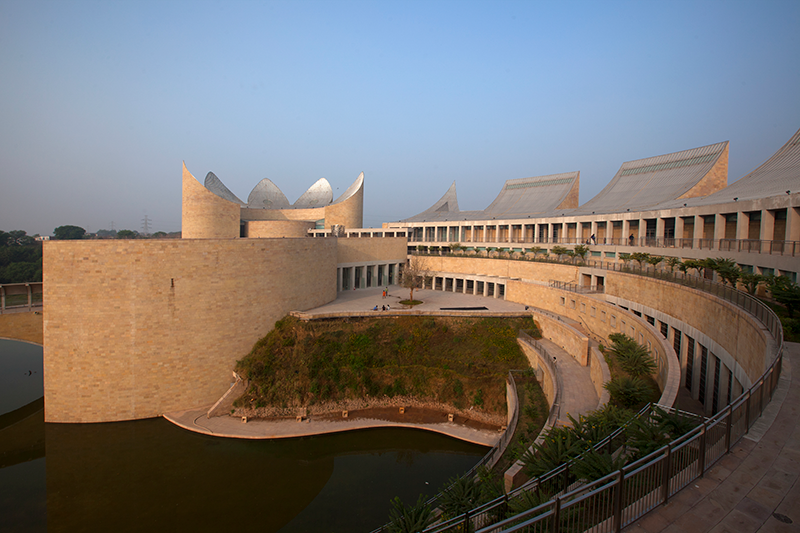 Virasat-e-Khalsa (Credit: Shalain Parker)
Virasat-e-Khalsa (Credit: Shalain Parker)
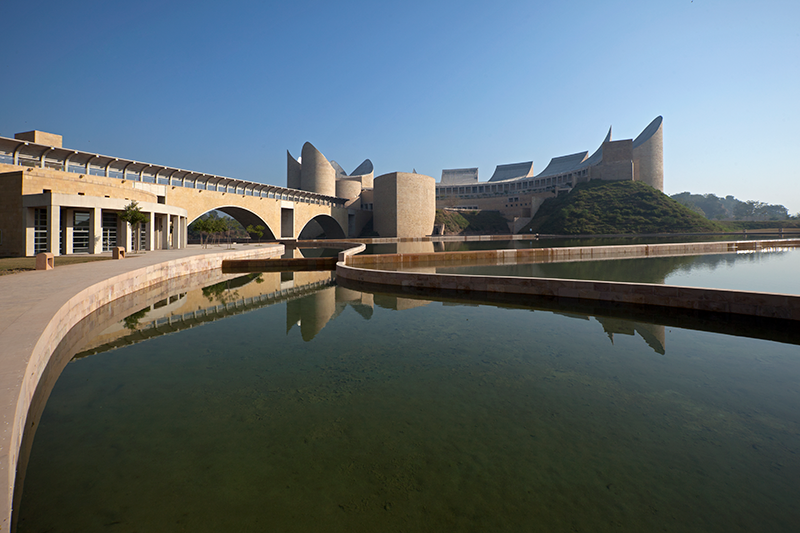 Virasat-e-Khalsa (Credit: Shalain Parker)
Virasat-e-Khalsa (Credit: Shalain Parker)
A Home to Present Sikhism to the World
Sikhism is the largest religion in the Punjab state. And outside of India, Sikh communities are spread across the UK, US, and Canada. Yet Virasat-e-Khalsa is not only built for devoted followers. The mandate from the project clients — ASF (Anandpur Sahib Foundation) and the Government of Punjab — was to create a dedicated exhibition space to illuminate for generations across the globe the culture of Punjab and the vision of Sikhism, and to deliver a message of peace.
The architect is the acclaimed Moshe Safdie, known for creating the Holocaust History Museum in Jerusalem. At the core of Virasat-e-Khalsa are two complexes at each side of a ravine: a smaller western complex including a 428-seat auditorium and research library, and an eastern building where the historic and thematic narratives created by Behl greet visitors in permanent exhibit halls.
The staggering project is a culmination of a two-decade development from concept to completion. Academic and art historians were engaged throughout the process to ensure it would stand as an authentic monument for Sikhism. “When the exhibits were close to ready to be inaugurated, the heads of principal Sikh institutions in India came together to inspect and authenticate all details of the exhibits,” says Behl. “That was the biggest energy towards the end.”
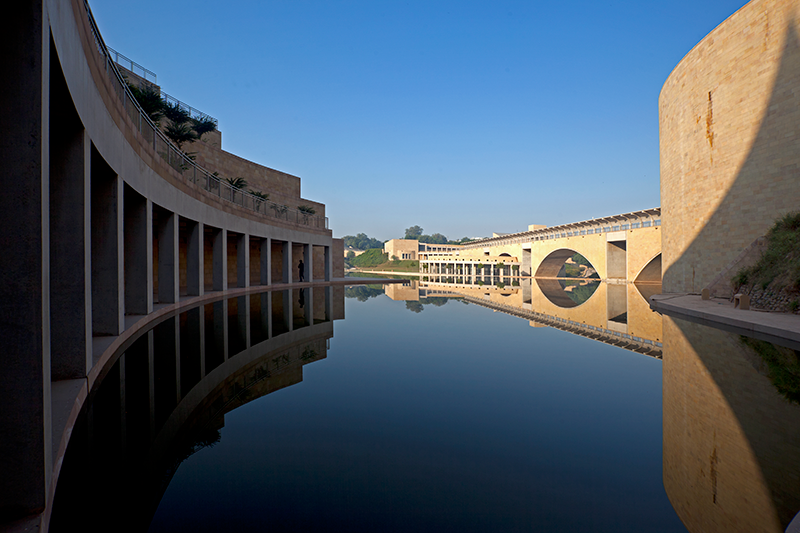 Virasat-e-Khalsa (Credit: Shalain Parker)
Virasat-e-Khalsa (Credit: Shalain Parker)
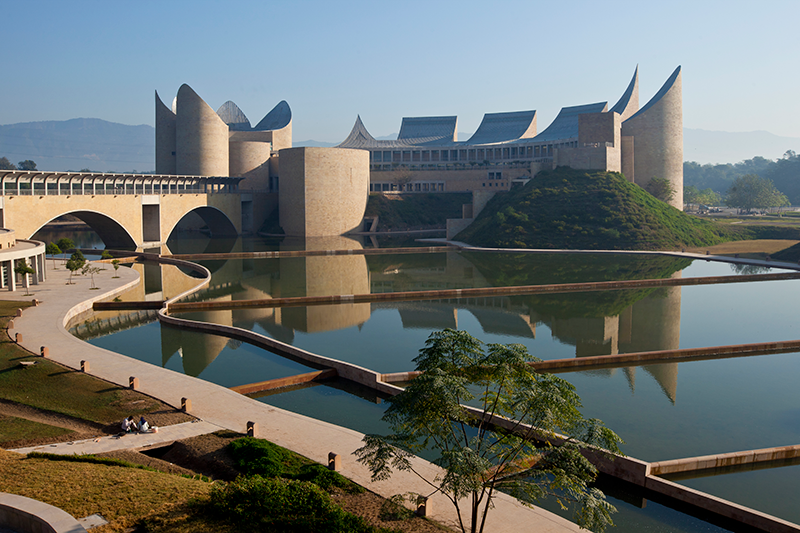 Virasat-e-Khalsa (Credit: Shalain Parker)
Virasat-e-Khalsa (Credit: Shalain Parker)
Space, Content, and Technology Coming Together
Tight space is a common limitation in museum projects, but it wasn’t the case for Virasat-e-Khalsa.
With 6,500 square meters of incredible exhibition space complete with cavernous galleries and ceilings as high as 18 meters, Behl’s team had plenty of opportunities to create myriad scenographic environments. Unlike traditional heritage museums, there are no existing artifacts and photographs to populate the halls. Behl had to build on his heritage interpretation and create an exhibit collection faithful to the Sikh identity.
The galleries were completed in two separate stages. The first phase is primarily focused on the spiritual and metaphorical teaching of the gurus. Phase two episodically tells about the events starting with the Guru Granth Sahib’s questions and hymns from the 1700s through post-independent Punjab. From ambient spatial soundtracks, robotics, and dynamic color-changing LED to immersive projection mapping, Behl’s team leaned on its growing technology toolkit where appropriate. Special attention was given to ensure the architecture, content elements, and technology were synergistically integrated so they would combine to deliver a rich, transformative experience that would feel as though they were destined for one another.
Case in point is Gallery 18, devoted to Punjab’s most powerful and wealthiest king, Maharaja Ranjit Singh. From the era’s religious celebrations to the battlefields, the king’s reign is in full display using 360-degree projection mapping. Impressive visuals are projected on almost every surface including character cutouts, balanced with music tracks and thundering war drums to let awestruck guests temporarily forget their surroundings.
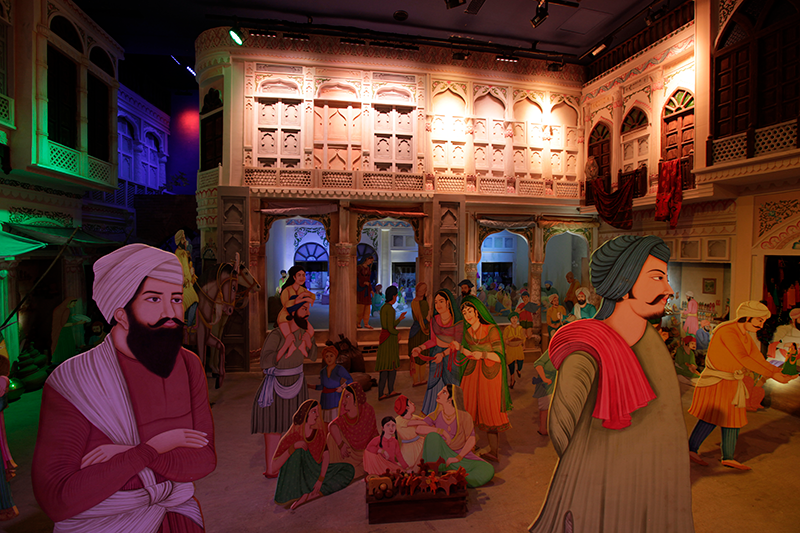 Gallery 18 (Credit: Shalain Parker)
Gallery 18 (Credit: Shalain Parker)
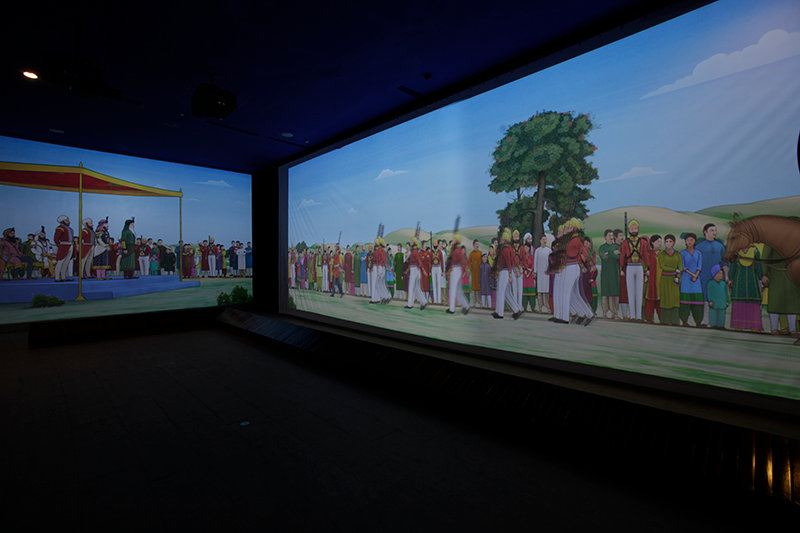 Gallery 18 (Credit: Shalain Parker)
Gallery 18 (Credit: Shalain Parker)
Elsewhere, in the vast gallery 15, also the Gurudwara-Communion with God, an imaginative montage of lights brings the ancient teaching of Guru Granth Sahib to life. Visitors descend along a ramp that spirals around a central beam of light representing the eternal light. The backdrop is a majestic combination of architectural elements borrowed from the golden temple Darbar Sahib layered with thousands of embedded backlit LED lights to create a divine moment.
Other exhibits guide visitors through the lives of Sikh gurus, birth of the Khalsa, as well as the more recent partition of Punjab, the migration, and modern-day politics. The museum counts 27 galleries in total. Narratives, Punjab songs, and stunning visuals emanate from everywhere to evoke the times of different periods. An RFID audio guide system is on hand for visitors to wander to any area and hear the narration for a particular exhibit in Hindi, Punjabi, and English.
“As the content producer, we singularly focus on the story, and let technology be the messenger,” says Behl. “The drama, the emotions, and the dynamism are the guide for me to catalyze these experiential moments. Guests walk away not thinking about the technology deployed. They know they came to a modern museum but mostly they remember how they were moved by a particular event, be it the energy or the sadness.”
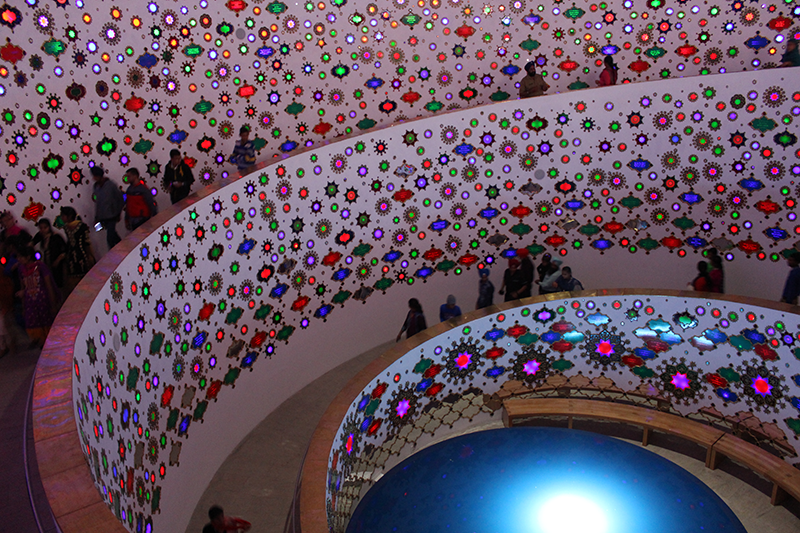 Gallery 15 (Credit: D.S. Singha)
Gallery 15 (Credit: D.S. Singha)
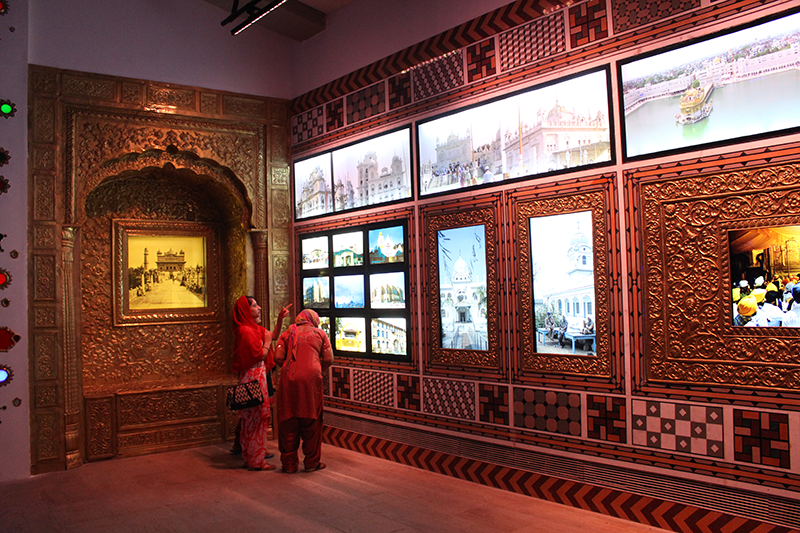 Gallery 15 (Credit: D.S. Singha)
Gallery 15 (Credit: D.S. Singha)
When a Longer Project Timeline Becomes an Asset
Over the 15 years Behl has been involved in Virasat-e-Khalsa, rapid technology developments afforded possibilities unattainable at the start of the project. “Just between phases one and two, technology had already gotten much easier to use and also more affordable, and that’s delightful for us as storytellers.
“In phase two we can create so much movement and dynamism with just portable lighting and color-changing LED,” he continues. “New servers also allow us to have very precise control of the projection environments. This museum exemplifies the technology progress happening around us.”
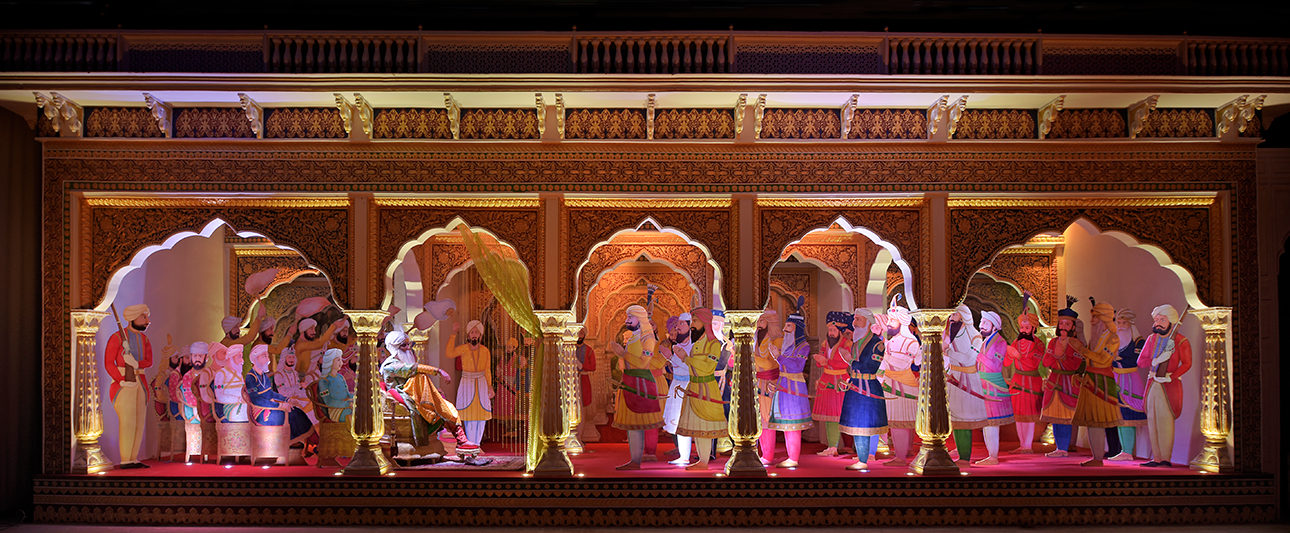 Gallery 15 (Credit: Sandeep Sahdev)
Gallery 15 (Credit: Sandeep Sahdev)
More Local Talent Needed
Undertaking a project of this large scale has its share of challenges, but technology procurement isn’t one of them.
“The challenge is not how you choose one piece of equipment over another,” says Behl, “but how you artfully create a cocktail of technology solutions to elevate the story. It’s the full walk, how the equipment, script, soundtracks are coming together. This requires collective talent.
“And in India, AV technology is still nascent; there aren’t theme parks providing a talent pool trained to international standards,” he continues. “Each project like Khalsa is the start of a cycle to create this wave of trained technical personnel. It will take time.”
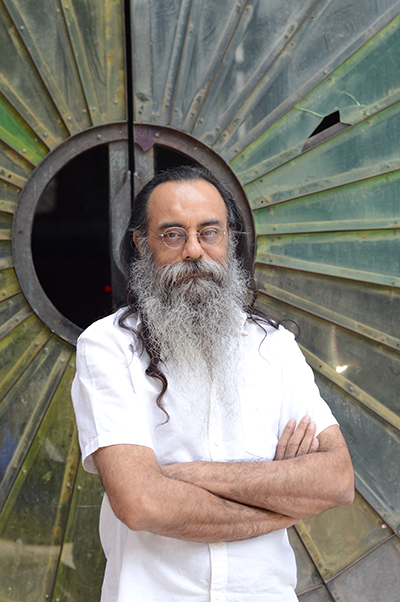 Amardeep Behl, Head of Design Habit (Credit: Vibhu Galhotra)
Amardeep Behl, Head of Design Habit (Credit: Vibhu Galhotra)
Looking to the Future
Building on the popularity of the museum, discussions are underway to further propel the legacy of Sikh culture. “We’re talking about more program-driven initiatives within the exhibit spaces and how the building facade can speak directly to the community, likely through sound and light,” says Behl. “We are also discussing a book project on the museum.”
In summer 2018, Punjab Minister Navjot Singh Sidhu announced a blueprint to develop the infrastructural facilities to support the heavy footfall from across the globe.
“Museums are not just about the exhibits, and they shouldn’t stand still,” adds Behl. “They are an important platform to outreach and gather communities. There are still tremendous opportunities to continuously develop this institution to extend its impact.”
New Delhi-based Design Habit specializes in the conception, creation, and delivery of dynamic exhibitions, narrative museums, theme parks, corporate experience centres, production design for films, mixed-use real estate, and heritage projects. It designs experiential storytelling spaces that are immersive, emotional, entertaining, and educational.






